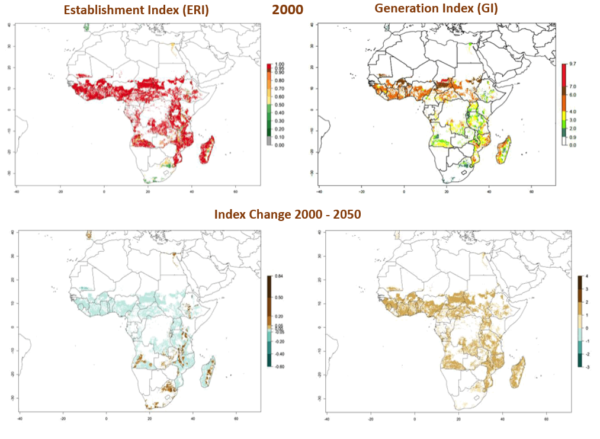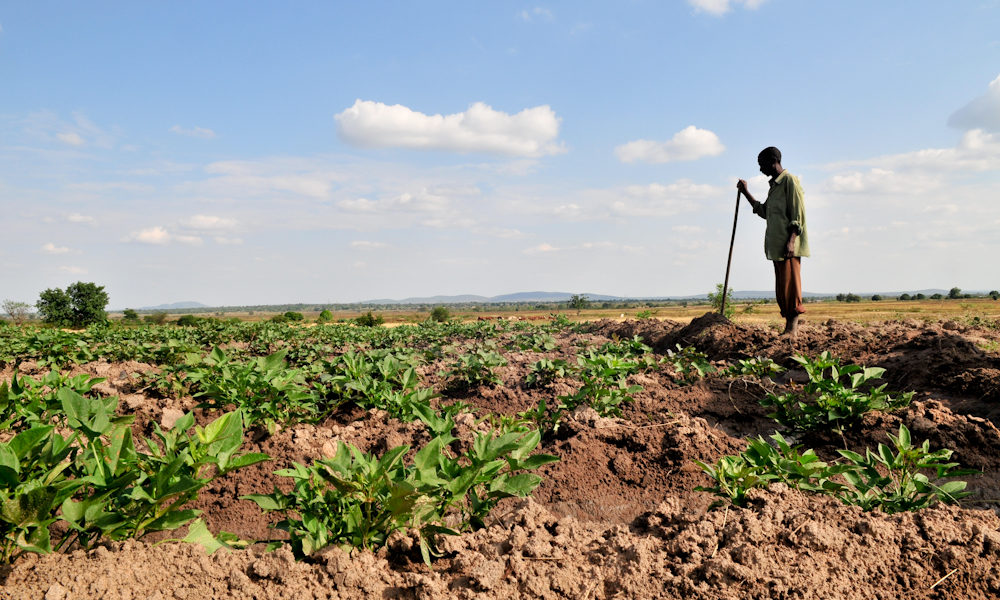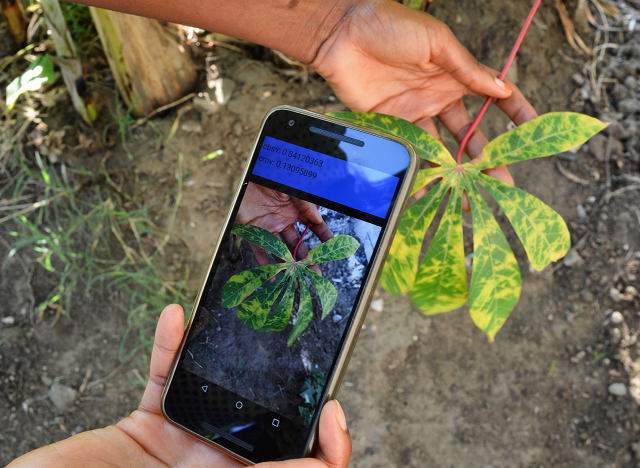Research centers and their partners have made good progress toward harnessing the potential of roots, tubers and bananas to improve food security, nutrition and smallholder incomes, but scientists are concerned that impacts of climate change could undercut many of those gains in the coming years.
In response to this threat, a team of scientists working with the CGIAR Research Program on Roots Tubers and Bananas (RTB) collaborated on a paper that underscores the urgency of building greater climate resilience into crops as global weather and climate patterns shift in a warming world. Published in Open Agriculture, the paper, entitled ‘Roots, Tubers and Bananas: Planning for Climate Resilience’, outlines six steps needed to enhance the planning, breeding, dissemination and management of climate-smart varieties.
Over the last decade, “the urgency has really increased,” notes Dr. Graham Thiele, Director of RTB and lead author of the paper. “It’s being driven by the growing awareness of the reality of climate change, as well as a growing body of evidence about its potential impacts on agriculture, especially in some of the most vulnerable environments in Africa. Resilience is becoming much more center stage in our research planning.”
Thiele adds that while a gap remains between the sheer scope of the problem and investments into research needed to address it, there are many positive developments, such as more targeted climate-change models that will help researchers plan more effectively for a changing climate in the years ahead.
RTB is actively collaborating in this area with the CGIAR Research Program on Climate Change, Agriculture and Food Security (CCAFS). Dr Philip Thornton of CCAFS noted: “Decision support tools are going to play a vital role helping to set priorities and targeting research and scaling of climate smart options.”
“Crops are sensitive to changes in temperature and erratic rainfall patterns, so we need more locally detailed models to be able to understand the overall impacts of climate change and the adaptations needed [to respond to them],” observes Dr. Michael Friedmann, science officer at RTB. He notes that RTB supports research in East Africa that combines data from farm surveys, weather stations and laboratory experiments to create risk maps and models to predict the threats posed by specific crop pests and diseases under future climate scenarios.

Predictions of potato late blight severity in sub-Saharan Africa using a metamodel Left: current late blight severity; Right: late blight severity predicted by 2050 (source: Sparks et al. 2014)
“Most studies looking into the effects of climate change on food security have only focused on crop yields and may be under-estimating the magnitude of the link between climate change and food security,” said Dr. Dorcus Gemenet, molecular breeder and abiotic stress geneticist with the International Potato Center’s (CIP) Genomics and Crop Improvement group.
She explains that while drought and heat stress are the main threats to crop yield under climate change, crop breeders also need to address related factors such as irregular rainfall and increased pressure from pests and diseases as they work to develop climate-smart varieties. She adds that while improving yield is the top priority for breeders, they also need to understand how climate change may affect crop quality or shelf life, which is an especially important issue for roots, tubers and bananas.
Gemenet is working with scientists at North Carolina State University and other partners to identify DNA markers in sweetpotato that breeders can use to speed up the development of improved varieties. Over the past decade, CIP has worked with sweetpotato breeders in Africa to accelerate the breeding process, cutting the time it takes to cross, select, field test, and release a new variety from eight years to four. Gemenet and colleagues hope that the genomic tools they are currently developing will significantly further reduce in the time it takes to develop new sweetpotato varieties.

Changes in establishment and potential distribution (ERI) and abundance (GI) of the sweet potato weevil, Cylas puncticollis, according to model predictions from 2000 and to 2050. An ERI>0.95 is associated with potential permanent establishment of the pest (source: Okonya et al. 2016).
“If the breeding process cannot be made more rapid, then we won’t be able to develop the varieties that farmers need to adapt to climate change,” says Gemenet, adding that the challenge is both urgent and personal for her.
“Apart from being a scientist, I am the daughter of a peasant farmer in Kenya,” she says. “It is devastating to see a farmer who has lost his crops to drought.”
Gemenet explains that while accelerating the development of climate-smart varieties, breeders need to ensure that they have the traits that men and women want, so that they are widely adopted. RTB is prioritizing this goal though its coordination of the CGIAR Gender and Breeding Initiative.
“There is already pressure to produce enough food now, and it is daunting to think about the future, but we need to prepare for the future,” she says.
Gemenet explains that as pressing as the challenges created by climate change are, she is encouraged by the pace of advances in technology and knowledge sharing that scientists can take advantage of. She adds that CIP and the other RTB centers have already accomplished a great deal toward making root, tuber and banana production more resilient, which she and her colleagues can build upon.
As Thiele observes: “Climate smart breeding means we need to keep doing what we are already doing. We just need to do it faster, better and smarter.”
By Amy Rogers Nazarov and David Dudenhoefer




